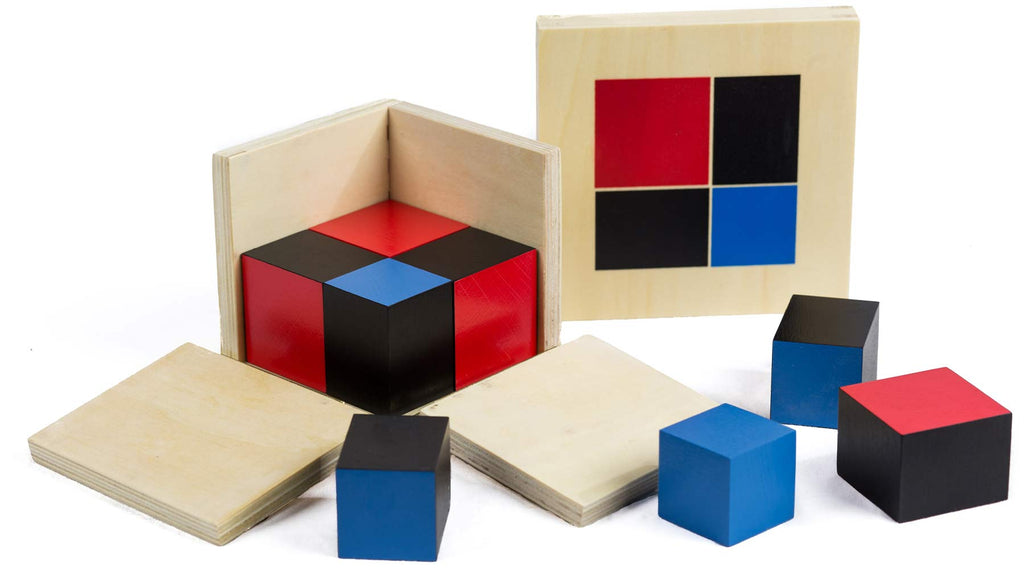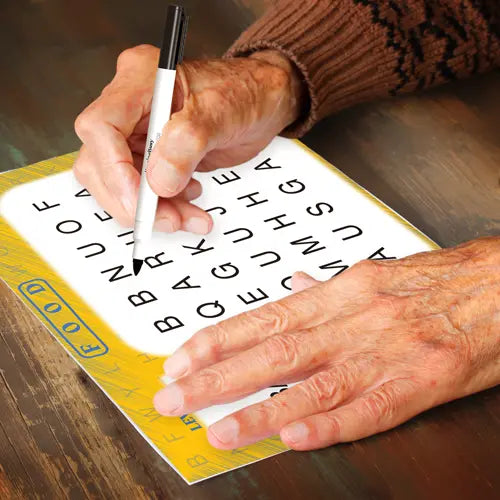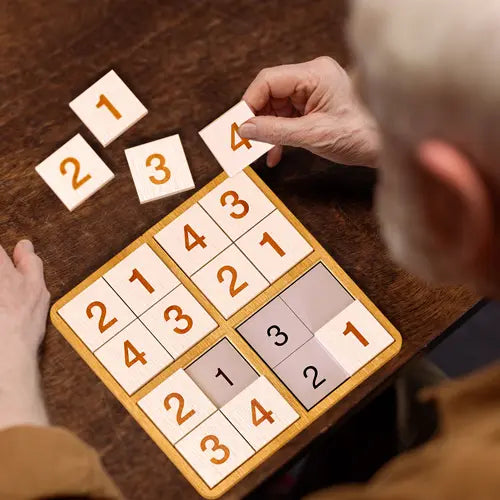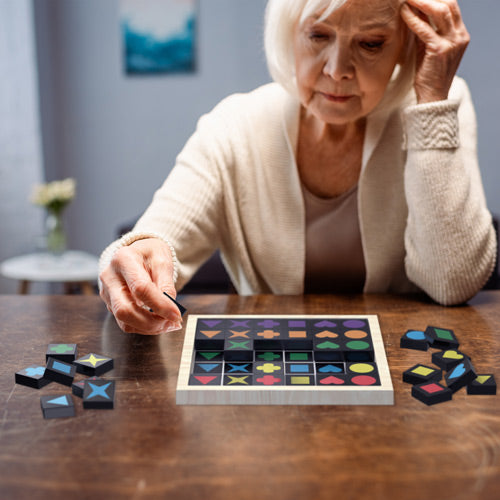
Over many years of observation and trial Dr. Montessori designed an entire range of materials to be used in the classroom. Some were based on existing sensory development tools and others through trial error. These materials were divided into different classes such "Sensorial", "Language" and "Math" with many activities in each class. If you attended a Montessori school or if you have contact with children who have, you will recognize these classes and many of the materials.
The two founders of Google both attended Montessori schools and to celebrate Dr. Montessori's 142nd birthday in 2012, the "Google Doodle" (the Google homepage presentation of the name "Google") was made from five traditional Montessori activities. From left to right they are "sandpaper letters", "knobbed geometric insets", "cylinder blocks", "short bead chains" and the "trinomial cube".
There are over one hundred activities that are used in teaching Montessori to children in classrooms around the world today. We have selected a few of these from the sensorial class to help us in our work with people with dementia. The method in which we use each of these activities provides benefits in cognitive skills, dexterity and sensory perception.
MYSTERY BAG

Officially called the "Stereognostic Bag" this activity consists of ten pairs of wooden shapes. The smallest dimension of a shape is one half inch and the largest two inches. The shapes include cubes, rectangular cubes, prisms, spheres and egg shapes. The traditional starting point in using the activity is to place only the cubes and rectangular cubes in the bag. The participant reaches into the bag (without looking, of course) and as they pull out a piece they announce whether it is a cube or a rectangular cube by feel alone. As the person becomes more familiar with the shapes, all the pieces are put in the bag. The participant pulls out one piece, then must feel around in the bag and select its match. This is repeated until all the pieces have been paired and removed.
The thought process involved in looking at a piece, interpreting it and then finding its match is very different than the process involved in seeing the object. This activity provides a connection between the two. It stimulates the sense of touch by eliminating distractions and helps with cognitive function through the matching process.
In addition to this traditional use of the Mystery Bag, we also use it in other ways in working with people with dementia. For example, we use templates showing outlines of select pieces and encourage the participant to find the matching physical shape. Another method is to place one block down and find other blocks that together make the same shape.
BINOMIAL CUBE
 The binomial cube is a wooden container about three inches on all sides with a separate lid, two sides hinged to the base, and two sides fixed to the base. The hinged sides form one corner and the fixed sides form another. Inside the box are eight wooden blocks that fit together to fill the space. Each face on each block is coloured either blue, black or red. The participant is told to put the all red block into the fixed corner of the container to start the activity. From there, each block is placed so that the colour of each touching face is the same. In other words, a red face goes against a red face already in place. Black goes to black and blue goes to blue. When completed, a cube is formed within the container. The colour and pattern on each face of the completed cube are the same, and match the pattern shown on the lid of the activity.
The binomial cube is a wooden container about three inches on all sides with a separate lid, two sides hinged to the base, and two sides fixed to the base. The hinged sides form one corner and the fixed sides form another. Inside the box are eight wooden blocks that fit together to fill the space. Each face on each block is coloured either blue, black or red. The participant is told to put the all red block into the fixed corner of the container to start the activity. From there, each block is placed so that the colour of each touching face is the same. In other words, a red face goes against a red face already in place. Black goes to black and blue goes to blue. When completed, a cube is formed within the container. The colour and pattern on each face of the completed cube are the same, and match the pattern shown on the lid of the activity.
In the same way as we use templates for the Mystery Bag, we also use them to create new activities with the binomial cube. Because the block faces are coloured (unlike the Mystery Bag pieces which are natural wood), we can use color in the templates in addition to shape to challenge different areas.
BLUE TRIANGLES
 This activity consists of twelve identical triangles with one right angle, and each side a different length. Traditionally they are used to construct shapes and then explore the characteristics, similarities and name of the shape created.
This activity consists of twelve identical triangles with one right angle, and each side a different length. Traditionally they are used to construct shapes and then explore the characteristics, similarities and name of the shape created.
We use the triangles with templates to guide the person with dementia to create specific shapes which can be as simple as rectangles, or more complex shapes such as a wheels or stars.
NUMBER RODS
 Number rods are rectangular shaped, of increasing length and painted with alternating red and blue sections. They are approximately one half inch square in cross section and vary in length from one inch to ten inches. Traditionally this activity is used to teach counting and addition and subtraction by placing the rods in specific ways and counting the colors.
Number rods are rectangular shaped, of increasing length and painted with alternating red and blue sections. They are approximately one half inch square in cross section and vary in length from one inch to ten inches. Traditionally this activity is used to teach counting and addition and subtraction by placing the rods in specific ways and counting the colors.
We use the rods for sorting both in length and color, and also to create specific shapes. As always, templates are used to guide the process.




